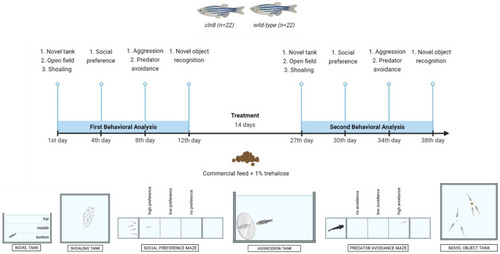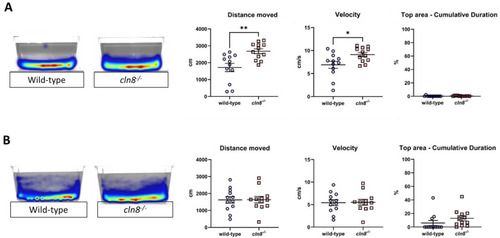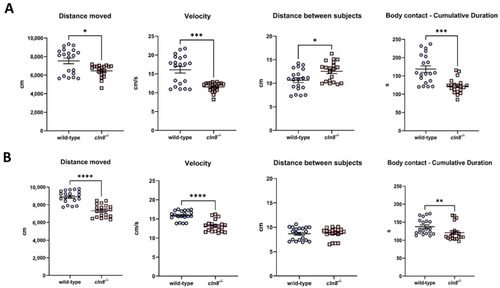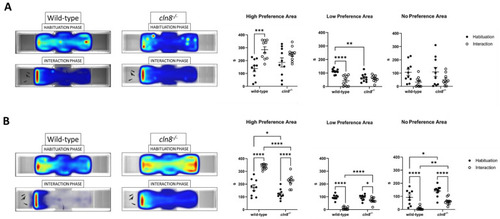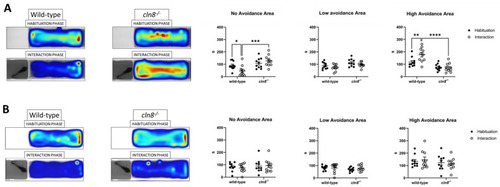- Title
-
Trehalose Ameliorates Zebrafish Emotional and Social Deficits Caused by CLN8 Dysfunction
- Authors
- Licitra, R., Della Vecchia, S., Santucci, L., Vivarelli, R., Bernardi, S., Santorelli, F.M., Marchese, M.
- Source
- Full text @ Cells
|
Schematic representation of the experimental trial. |
|
Novel tank test behavioral results before ( PHENOTYPE:
|
|
Shoaling test behavioral results before ( PHENOTYPE:
|
|
Social preference test behavioral results before ( PHENOTYPE:
|
|
Aggression test results before ( PHENOTYPE:
|
|
Predator avoidance test results before ( PHENOTYPE:
|
|
Novel object tests behavioral results before ( PHENOTYPE:
|

